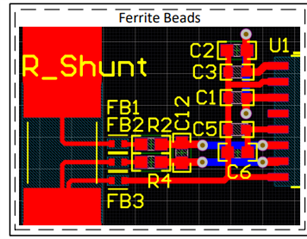Hi Team,
A customer is using AMC1200 and would like to connect it using different shunts as shown in the image below. The shunts were for current measurement
The shunt values are 30mOhm; 30 mOhm; 240mOhm; and 900 mOhm, to get currents of values 10Ampere, 5Ampere, 1 Ampere, and 250 mA. with 300 mV at full scale of each range. For example, 10Ampere through the 30 mOhm will give 300 mV so does the 5Ampere through the 30mOhm+30mOhm, etc.
Would it be okay to do this or will they encounter errors?
Regards,
Marvin




